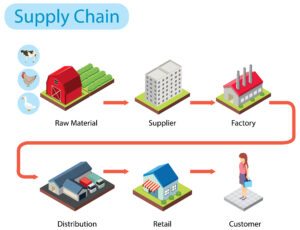ECONOMY
EXPLORING THE CONCEPT OF UNIVERSAL BASIC INCOME

EXPLORING THE CONCEPT OF UNIVERSAL BASIC INCOME
INTRODUCTION:
A socioeconomic proposal known as Universal Basic Income (UBI) has received a lot of interest recently. According to the notion, all members of a population would receive a regular, unconditional cash transfer, regardless of their degree of income or work. Advocates contend that UBI has the ability to address a number of societal issues, such as poverty, inequality, and possible automation-related repercussions. The idea also prompts questions about labor incentives, financial sustainability, and potential unforeseen consequences. This article seeks to provide a thorough and in-depth analysis of UBI, including its theoretical underpinnings, real-world applications, potential advantages, and difficulties.

- THEORETICAL FOUBDARION OF UBI
Early considerations of a basic income can be found in the writings of philosophers like Thomas Paine and Bertrand Russell. UBI advocates contend that it is in line with social fairness and human dignity ideals and gives people the choice to deploy their resources however they see fit, as well as to maintain a minimal standard of living and seek personal and professional growth.
The intellectual basis for the idea of UBI is provided by these pillars. We provide a few of the main theoretical justifications for UBI below:
- Human Dignity And Social Justice The values of social fairness and human dignity are frequently emphasized by UBI proponents as the main grounds for its implementation. Every person has a right to a minimal level of life that ensures they can meet their basic needs, according to the fundamental tenet. By giving everyone a one-time, unconditional cash gift, regardless of their job situation or level of income, UBI wants to make sure that everyone has access to the chance to live honorably and the ability to follow their dreams.
- Equity and Redistribution: UBI is considered an instrument for advancing social and economic equity. It casts doubt on the notion that income distribution should only be determined by market forces and emphasizes the significance of redistributive measures. By guaranteeing a minimum income for everyone, UBI aims to eliminate the current income gaps that are frequently caused by systemic issues. UBI seeks to eliminate poverty, close income gaps, and build a more equitable society by dispersing resources more fairly.
- Economic Efficiency and Automation: Discussions concerning the possible disruption brought on by the rise of automation and technological advancements have sparked. may have an impact on the labor market. Advocates contend that by providing financial security for those impacted by job loss, UBI can address this issue. UBI gives people the freedom to take advantage of new possibilities, pursue education or retraining, and engage in entrepreneurial endeavors without worrying about their financial security. UBI can promote economic resilience and adaptation in the face of shifting economic conditions by offering a source of income separate from regular employment.
- Welfare System Simplification: One of the UBI’s practical benefits is its potential to streamline complicated welfare systems. Traditional means-tested welfare programs frequently include onerous administrative requirements, expensive administrative expenses, and disincentives to work because of benefit cliffs. On the other hand, UBI offers a simple and universal strategy, minimizing red tape and ensuring that those who require assistance receive it. UBI can streamline social assistance programs, making them more effective and simple to use by doing away with the need for comprehensive means testing and complicated eligibility requirements.
- Individual Autonomy and Empowerment: The foundation of UBI is the idea of personal autonomy and empowerment. People have more control over their life and the freedom to make decisions that are consistent with their values and objectives when there is a basic income floor in place. UBI recognizes that people have a variety of wants and goals outside of what is typically thought of as labor. It enables people to deploy their resources according to their own needs, such as completing education, taking on caregiving duties, or engaging in artistic pursuits. This focus on individual autonomy and choice is at the cornerstone of the theories supporting UBI.
- PRACTICAL IMPLEMENTATIONS OF UBI
It becomes obvious that there are numerous techniques and models that can be taken into account when thinking about the practical implementations of Universal Basic Income (UBI). The fundamental idea is to regularly and unconditionally pay cash transfers to every member of a population, but the precise design and execution specifics can differ. Here, we look at some of the important factors and strategies for putting UBI into practice:
- Generalized vs. Selected Approach: Whether to take a universal or selective approach to adopting UBI is one of the key issues to think about. A universal approach provides the cash transfer to every member of the specified population, regardless of their degree of income or work. This ensures that everyone has access to the income floor, thereby minimizing the administrative burden and social shame associated with means-tested programs. As an alternative, a selective strategy focuses resources on particular groups, such as those in need or those who fall below the poverty line, which can aid those who are most at danger of poverty.
- Cash Transfer Amount and Frequency: Setting the cash transfer’s size and frequency is a crucial component of implementing UBI. The sum should be adequate to meet everyone’s fundamental needs, including those for food, shelter, and healthcare, as well as to allow them to maintain a minimal level of living. To avoid creating disincentives for people to work or encouraging reliance, it’s crucial to strike a balance with the cash transfer, too. The transfer frequency might vary, depending on factors such depending on the program’s practical and logistical factors, as monthly, quarterly, or yearly.
- Funding Mechanisms: Finding and securing the required funding is one of the main obstacles to implementing UBI. It normally takes a sizable amount of cash to finance UBI. Existing welfare program budgets may be reallocated, new taxes or levies (such a wealth tax or a carbon tax) could be implemented, or money from public assets or natural resources could be used as a financing source. To ensure financial sustainability, governments may also look into joint ventures with private groups or incorporate UBI into more general economic policy.
- Pilot Programs and Experiments: Prior to the widespread implementation of UBI, numerous areas and nations carried out pilot programs and experiments to evaluate its viability and effects. These pilots entail supplying a a small group of people receiving UBI payments over a predetermined time period while data is being gathered to assess the effectiveness of the program. These studies include data on how UBI affects employment rates, mental health, academic performance, and overall economic well-being. Policymakers obtain critical understanding of the advantages and potential drawbacks of UBI by examining and learning from these pilot programs, enabling them to make modifications and improvements before UBI is widely implemented.
- Complementary Policies and Social Services: In order to create a holistic strategy for addressing societal needs, UBI should be taken into consideration in conjunction with other social policies and services. To guarantee that people have access to necessary services in addition to the cash transfer, complementary policies may include healthcare, education, housing, and job training programs. These regulations complement UBI to foster economic mobility, lessen inequality, and support personal well-being.
- Evaluation and Adaptation: Continuous evaluation and adaptation are crucial components of adopting UBI. The effectiveness of the program should be ensured by conducting regular evaluations to gauge its impact, take into account any unexpected consequences, and make any necessary revisions. Policymakers may improve the program as necessary and manage any new difficulties thanks to stakeholder participation, data analysis, and feedback processes that support evidence-based decision-making.
The practical application of UBI entails considerations regarding the program’s universality or selectivity, the quantity and frequency of cash transfers, funding sources, pilot initiatives, complementary regulations, on-going evaluation, and adaptability. To create a UBI model that is in line with each implementation, comprehensive study of social, economic, and political variables is required. the objectives and setting of a specific society.
- POSSIBLE MERITS OF UBI
- Poverty Alleviation: By giving everyone a stable income floor, UBI has the potential to drastically lower poverty rates. It makes sure that fundamental necessities are addressed, establishing a safety net that can shield society’s most vulnerable members.
- Economic Stimulation: UBI can increase consumer spending, regional economies, and small enterprises by giving each person a steady stream of income. This surge in demand might spur economic expansion and employment development.
- Better Health and Well-Being: Having financial security can improve mental and physical health by lowering the stress that comes with being insecure about one’s financial future. Reduced healthcare expenses and an all-around enhanced quality of life can come from better health outcomes.
- Flexibility and Universal Coverage: UBI gives people the freedom to choose their careers, educational paths, business ventures, and caregiving responsibilities without worrying about losing essential benefits or slipping into poverty. Because it is not dependent on employment, more people can follow their creative hobbies and find personal pleasure.
- Better Mental Health: By reducing financial stress and uncertainty, UBI can enhance general welfare and mental health.
- Less Bureaucracy: By removing the need for various means-tested benefits and cutting the administrative expenditures associated with the current welfare programs, UBI can streamline the welfare system.
- More Options For Education: People receiving UBI may have the financial means to pursue further education or vocational training, which will improve their skills and career prospects.
- Equal Pay For Women: UBI has the ability to solve income and unpaid work disparities between men and women by providing a basic income that acknowledges the unpaid caring work that is primarily done by women.
- Flexibility For Caring Work: UBI can help carers by enabling them to support their families financially while still having time to look after young children, the elderly, or those with disabilities.
- Financial Stability In Times Of Crisis: UBI can serve as a safety net during economic downturns, giving people a steady income even when jobs are hard to come by.
- Greater Social Cohesion: By ensuring that everyone’s fundamental needs are addressed and lowering inequality and the likelihood of social disturbance, UBI can promote a sense of social solidarity.
- CHALLENGES AND CONSIDERATIONS:
- Funding: One of the major issues relating to Funding is UBI. Finding sustainable funding sources is essential because the implementation of UBI demands significant financial resources. Taxes, the elimination or reorganization of current social programs, or the creation of revenue from cutting-edge technology like carbon taxes are all potential sources.
- Work Incentives and the Labor Market: UBI opponents worry that people may choose to rely only on the unconditional cash transfer, which might serve as a deterrent to work. Designing UBI policy must take into account the need to strike a balance between job incentives and encouraging economic involvement.
- Inflationary Pressures: Opponents are concerned that enacting UBI without the necessary controls may result in inflationary pressures since rising consumer spending may result in higher pricing for products and services. To reduce these risks, careful economic planning is necessary.
- Social and Cultural Consequences: UBI could unexpected social and cultural repercussions. Critics contend that it would diminish the value of labor, jeopardize societal cohesiveness, or promote dependency. For societal progress, it is crucial to recognize and handle potential negative effects.
CONCLUSION
In order to combat poverty, inequality, and any potential problems brought on by automation, the idea of universal basic income proposes to give unconditional cash transfers to everyone. Despite the fact that UBI has the ability to reduce poverty, stimulate the economy, and promote wellbeing, it is critical to solve issues with funding, work incentives, inflation, and social ramifications. Policymakers and researchers must work together to create sustainable and equitable models that solve the challenges of adopting UBI in the real world as UBI continues to be investigated through trials and meticulous analysis.
More from my site
ECONOMY
Boosting Economic Growth: The Urgent Need for Enhanced Research and Innovation Funding in Central and Eastern Africa
Most African countries, including those in Central Africa and East Africa, have Research and Development (R&D) spending of less than 0.5% of GDP, which is well below the global average of 2.5% of GDP
For the third time, about 150 decision-makers and economic experts attended the session of the Intergovernmental Committee of Senior Officials and Experts (ICSOE) organised by the UN Economic Commission for Africa (ECA) in Central and Eastern Africa.
This year, the meeting was organised in partnership with the government of Cameroon to spark discussions and policy options on trade-related measures and innovation solutions that can help drive both the AfCFTA and economic diversification in the region.
The meeting was held from 15 to 18 October in Yaoundé and brought together policymakers and experts from 21 African countries.
“Innovation is an essential determinant of productivity growth, especially during this era of the Fourth Industrial Revolution. Its significance is reflected in the United Nations Sustainable Development Goal (SDG) 9 which aims to “build resilient infrastructure, promote inclusive and sustainable industrialization and foster innovation”. ECA Deputy Executive Secretary Hanan Morsy said at the opening of the meeting.
“However, when research and innovation figures are considered, most African countries, including those in Central Africa and East Africa, have Research and Development (R&D) spending of less than 0.5% of GDP, which is well below the global average of 2.5% of GDP,” she added.
“Modern economic growth is encapsulated in a continuous process of technological innovations” stressed Mr Alamine Ousmane Mey, Minister of Economy, Planning and Regional Development of Cameroon.
He emphasizes the need for sustained support to African states to establish an ecosystem conducive to innovation. “This support is crucial to address urgent needs such as promoting blue and green economies, as well as inclusive industrialization and economic diversification”.
Macroeconomic Resilience in the Face of Adversity: Central and East Africa’s Growth
Participants at the meeting also discussed a detailed comparative analysis of the macroeconomic situation in Central and Eastern Africa from both an economic and social perspective, taking stock of the challenges posed by high debt levels, post-pandemic inflationary pressures, and climate change impacts.
Despite these hurdles, ECA estimates a robust regional growth performance in 2023, with Eastern Africa achieving a remarkable 6.3% increase and Central Africa a 3.3% rise, outpacing the global economic growth rate of 2.7%.
In 2024, both sub-regions demonstrated exceptional economic resilience, with East Africa leading with a 5.8% growth in real GDP, compared to Central Africa’s 3.5%. Central and East Africa still face challenges in generating more growth and ensuring that growth leads to sustainable economic and social transformation.
ICSOE: A platform for solutions
While the ICSOE meeting focused on the importance of accelerating economic diversification, particularly on the special focus on the issue of Research and Innovation, it was also a platform to discuss critical economic development agendas of the region.
Participants discussed how the African Continental Free Trade Area (AfCFTA) could spur sustainable and inclusive growth on the continent if stronger support measures targeting women, young traders and small businesses are implemented,
Participants discussed increased liquidity for African countries which can be achieved by implementing innovative financing instruments such as debt-for-nature swaps, green and blue bonds or advancing carbon markets to establish a fair carbon price.
About ECA in Central and East Africa
The Subregional Office for Central Africa of ECA is located in Yaoundé, Cameroon, The office covers seven countries: Cameroon, the Central African Republic, Chad, Congo, Equatorial Guinea, Gabon and Sao Tome and Principe)with an extension of its services to the rest of ECCAS member states.
The Subregional Office for Eastern Africa is located in Kigali (Rwanda). The office covers 14 countries: Burundi, Comoros, Democratic Republic of Congo, Djibouti, Ethiopia, Eritrea, Kenya, Madagascar, Rwanda, Seychelles, Somalia, South Sudan, Tanzania and Uganda.
Distributed by APO Group on behalf of United Nations Economic Commission for Africa (ECA).
More from my site
BANKING
Financial Analysis: A Comprehensive Study of The Well-Being of A Country

Financial Analysis: A Comprehensive Study of The Well-Being of A Country
Understanding the financial stability of a country requires a thorough understanding of financial analysis. In order to offer insights into the overall financial stability and overall wellness of the country, it entails evaluating a range of economic indicators, financial performance, and market movements.
In this article, we will delve into the fundamentals and importance of financial analysis in evaluating a country’s economic situation.
THE HISTORY ABOUT FINANCIAL ANALYSIS
Ancient Beginnings:
The roots of financial analysis can be traced back thousands of years. The ancient Mesopotamians, Egyptians, and Greeks were among the pioneers of documenting financial transactions, creating basic records of assets and liabilities. These early attempts laid the groundwork for the concept of financial analysis through the study of financial statements and ledgers.
Medieval Europe:
During the Middle Ages, Europe witnessed the rise of merchant guilds and the emergence of double-entry bookkeeping. Italian mathematician and Franciscan friar, Luca Pacioli, is often credited with formalizing double-entry bookkeeping, publishing his seminal work “Summa de arithmetica, geometria, proportioni et proportionalita” in 1494. The concept of balancing debits and credits within financial records formed the basis for modern financial analysis techniques.
Industrial Revolution:
The Industrial Revolution in the 18th and 19th centuries revolutionized business and the need for financial analysis grew rapidly. As companies expanded and diversified, investors began demanding more comprehensive financial reports to assess the potential risks and returns of their investments. The birth of limited liability companies further accelerated the need for financial analysis, as shareholders sought transparency in the performance of their investments.
Modern Era:
The 20th century witnessed significant advancements in financial analysis techniques. The advent of electronic computing in the mid-1900s enabled the processing and analysis of vast amounts of financial data, leading to the development of sophisticated financial models and ratios.
The Great Depression of the 1930s laid the groundwork for modern financial analysis as regulators sought effective ways to prevent future economic crises. The establishment of the U.S. Securities and Exchange Commission (SEC) in 1934 brought about standardized reporting requirements, including the filing of audited financial statements. This increased transparency and standardized financial reporting provided analysts with a more accurate and consistent basis for their analysis.
The Rise of Quantitative Analysis:
In the latter half of the 20th century, the growth of computing power and the availability of large data sets propelled financial analysis into new territory. Quantitative analysis, utilizing statistical models and mathematical algorithms, started gaining prominence. Financial analysts began incorporating complex mathematical methods to assess investment opportunities, risk management, and portfolio optimization.
Modern Financial Tools:
With the advent of the internet and the digital age, financial analysis has become even more accessible and data-driven. Sophisticated software programs, data analytics tools, and artificial intelligence have revolutionized the way financial data is analyzed and interpreted. In recent years, technologies like machine learning have been leveraged to develop predictive models that can assess future trends and make accurate financial forecasts.
MEANING
Financial analysis is the process of evaluating businesses, projects, budgets, and other finance-related transactions to determine their performance and suitability. Typically, financial analysis is used to analyze whether an entity is stable, solvent, liquid, or profitable enough to warrant a monetary investment.
Financial analysis is a fundamental tool that allows organizations and individuals to assess the past, present, and future financial health of a business or investment. Through a systematic examination and interpretation of financial statements, ratios, and other key indicators, financial analysis helps in making informed decisions, optimizing resources, and improving overall financial performance. In this article, we will delve into the meaning of financial analysis, its prominent components, and its significance across various sectors.
Financial analysis involves scrutinizing financial data to evaluate the performance and profitability of an entity. It assists in quantifying the effectiveness of financial decisions, identifying trends, predicting future outcomes, and benchmarking against industry standards. By analyzing financial statements, investors, analysts, and other stakeholders gain valuable insights into the financial position, liquidity, solvency, and operational efficiency of an organization.
FUNDAMENTALS OF FINANCIAL ANALYSIS IN A COUNTRY
- Gross Domestic Product (GDP): GDP is a primary indicator used to gauge the economic performance of a nation. Financial analysts analyze GDP growth rates and its components, such as consumer spending, government expenditure, investments, and net exports. This analysis helps in determining the overall strength of the economy and identifying areas of potential growth.
- Trade and Balance of Payments: Trade analysis focuses on a country’s imports, exports, and balance of payments. Evaluating trade patterns helps identify sectors driving the country’s economic growth, trade imbalances, and potential risks to the economy from external factors such as changes in global demand or disruptions in supply chains.
- Inflation and Interest Rates: Analyzing inflation rates and interest rates provides insights into the stability of a country’s economy. High inflation erodes purchasing power, while high-interest rates can impact borrowing costs, affect consumer spending, and investment behavior. Financial analysts assess the impact of inflation and interest rates on an economy’s overall competitiveness and economic growth potential.
- Government Debt and Fiscal Policy: Analyzing a country’s government debt levels and fiscal policy is crucial in understanding its financial sustainability. A high level of government debt may lead to increased borrowing costs, reduced investor confidence, and potential risks to economic stability. Evaluating fiscal policies helps determine whether a country is managing its finances effectively and implementing sustainable economic growth strategies.
- Stock Market Performance: The stock market reflects investor sentiment and provides valuable insights into a country’s economic outlook. Analysts evaluate key stock market indices, such as the country’s primary exchange, sector-specific indices, and market capitalization trends. Monitoring stock market performance allows for an understanding of investor confidence, economic growth expectations, and potential risks to the financial system.
- Banking Sector and Financial Institutions: A robust banking sector is essential for economic stability. Financial analysts assess the health of the banking system by evaluating indicators such as non-performing loans, capital adequacy ratios, and the overall stability and soundness of financial institutions. Understanding the well-being of financial institutions helps gauge the potential risks to the overall economy, including credit availability, liquidity, and financial contagion.
- Regulatory Environment and Governance: The regulatory environment and governance play a critical role in attracting investment and fostering economic growth. Financial analysts assess the effectiveness of regulatory frameworks, transparency in financial transactions, and the overall credibility and efficiency of institutions responsible for enforcing regulations. Evaluating the regulatory environment aids in understanding potential risks and opportunities for sustainable economic development.
SIGNIFICANCE OF FINANCIAL ANALYSIS IN A COUNTRY
Financial analysis plays a vital role across various sectors, serving the following purposes:
- Evaluating Financial Performance: By conducting a comprehensive financial analysis, companies can assess their performance, profitability, and financial stability. This, in turn, helps in identifying areas for improvement, developing strategic plans, and making sound financial decisions.
- Assessing Investment Viability: Investors rely on financial analysis to evaluate the profitability and risks associated with potential investments. Through detailed scrutiny of financial data, investors can determine the financial health and growth prospects of a company, aiding in making informed investment decisions.
- Facilitating Lending Decisions: Financial institutions utilize financial analysis to assess the creditworthiness of loan applicants. By analyzing financial statements, evaluating ratios, and assessing the risk profile, lenders can ascertain the borrower’s ability to repay loans and make sound lending decisions.
- Supporting Strategic Decision-Making: Financial analysis aids in strategic decision-making, such as expansion, diversification, or mergers and acquisitions. Understanding a company’s financial position and performance provides a foundation for evaluating the feasibility and potential outcomes of such decisions.
CONCLUSION
Conducting a comprehensive financial analysis provides valuable insights into the economic landscape of a country. By evaluating indicators such as GDP, trade patterns, inflation rates, government debt, stock market performance, banking sector health, and regulatory environment, financial analysts can gauge the overall financial health, identify potential risks, and recommend strategies for sustainable economic growth. Accurate and timely financial analysis acts as a compass, guiding policymakers, investors, and businesses to make informed decisions and contribute to the overall prosperity of the nation.
More from my site
BANKING
The Impact of Supply Chain Disruption on Business Operations and Financial Performance

The Impact of Supply Chain Disruption on Business Operations and Financial Performance
Supply chain disruptions are very commonplace in today’s interconnected global economy, affecting organizations in a variety of industries. These interruptions may have far-reaching effects on a company’s financial performance in addition to its commercial operations. In addition to offering techniques to reduce the risks involved, this article seeks to give readers a thorough grasp of how supply chain interruptions affect corporate operations and financial performance.
MEANING OF SUPPLY CHAIN DISRUPTIONS
Any incident or event that prevents information, services, or items from smoothly flowing through the supply chain network is referred to as a supply chain disruption.
It describes any situation or incident that stops the movement of products, services, or data inside a network of supply chains. These interruptions may happen at any time during the supply chain, from suppliers of raw materials to final consumers, and can lead to disruptions, shortages, higher expenses, and eventually affect the chain’s overall effectiveness and performance.
Disruptions to the supply chain can be divided into two categories: internal disruptions that occur within the company and external interruptions that occur outside the company.
TYPES OF SUPPLY CHAIN DISRUPTION
Disruptions to the supply chain can come from a variety of sources and take many different shapes. Typical forms of supply chain disruptions include the following:
- Natural Disasters: Incidents like hurricanes, floods, tsunamis, and wildfires can cause damage to transportation networks, destroy infrastructure, and force the closure of manufacturing and distribution facilities.
- Geopolitical Events: The movement may be impacted by trade disputes, tariffs, sanctions, war, terrorism, political instability, and changes in governmental policy. moving commodities across international borders, sour commercial ties, and cause bottlenecks in the supply chain.
- Supplier Issues: Delays in the delivery of components or raw materials might result from issues with suppliers, such as bankruptcy or sudden changes in production capacity.
- Transportation Disruptions: The supply chain as a whole may be impacted by delays in the delivery of goods caused by strikes, fuel shortages, accidents, port congestion, and other transportation-related problems.
- Demand Surges or Drops: Unexpected fluctuations in customer demand, such as sudden increases in orders or decreases in sales, can result in mismatches between supply and demand, which can cause delays in manufacturing and delivery.
- Cybersecurity Breach: Information technology system malfunctions, cyberattacks, or data breaches can impair critical data, interrupt the flow of products and services, and offerings.
- Quality Control Issues: Recalls, manufacturing halts, and supply chain interruptions may result from issues with product quality, safety, or compliance.
- Pandemics and Health Crises: Situations like the COVID-19 pandemic can result in worker shortages, manufacturing closures, travel restrictions, and interruptions to international supply chains.
IMPACT ON BUSINESS OPERATIONS
Disruptions to the supply chain can have a big effect on how businesses operate, impacting many different parts of what they do. Among these effects are the following:
- Production Delays: Supply chain disruptions may cause delays in the delivery of components, finished goods, or raw materials, which may cause production to halt or slow down. This may affect a business’s capacity to reach production goals and promptly complete orders from customers.
- Increased Costs: Expenses associated with carrying excess inventory, accelerating shipments, finding alternate suppliers, and putting emergency plans in place can all rise as a result of supply chain interruptions. These extra costs have the potential to weaken profit margins and lower overall financial performance.
- Customer Dissatisfaction: Customers may become dissatisfied and lose faith in the business as a result of delays in the delivery of goods or services. Customer loyalty and the company’s reputation may suffer as a result.
- Inventory Management Problems: Disruptions in the supply chain may result in inventory levels that are out of balance, with an abundance of certain commodities and a deficiency of others. This may result in ineffective inventory management, a lockup in working capital, and higher carrying costs.
- Operational Disruptions: When important vendors or partners in logistics are unable to deliver merchandise services as anticipated, it may cause daily operations of a business to be disrupted, affecting departmental productivity and efficiency.
- Risk of Loss of Market Share: Prolonged supply chain interruptions increase the likelihood that a company may miss out on sales opportunities, lose market share, and experience other negative effects. Those with more dependable supply chains could have an advantage over rivals.
- Legal and Regulatory Issues: When a supply chain is disrupted, there may be legal repercussions, including breaking contracts, missing deadlines, and breaking rules. Legal issues, fines, and reputational harm to a business may arise from this.
- Long-term Business Impact: A company’s financial performance, competitive position, and general viability may all be negatively impacted by protracted or severe supply chain disruptions. It might impair the business’s capacity to sustain connections with clients, vendors, and other business associates.
- Communication and Collaboration Challenges: Interruptions can make it difficult for supply chain participants to coordinate, make decisions, and solve problems. Both efficient crisis management and general operational efficacy may be hampered by this.
IMPACT ON FINANCE PERFORMANCE
A company’s financial performance can be significantly impacted by supply chain disruption in a number of ways, including:
- Increased Expenses: Supply chain interruptions frequently result in greater expenses for items like faster shipment, purchasing from more expensive alternative suppliers, keeping extra inventory on hand, or putting emergency preparations in place. The company’s profitability may be directly impacted by these added expenses.
- Revenue Loss: Supply chain disruptions may cause delays in completing client orders, which may result in a potential loss of revenue because lost chances to close deals. If there are delays or product shortages, customers can also look for other suppliers, which would mean fewer sales for the business.
- Inventory Write-offs: When there are disruptions in the supply chain, inventory levels might become unbalanced, with certain items having excess stock and others lacking. As unsold or outdated inventory builds up and negatively affects the company’s financial condition, this may lead to inventory write-offs.
- Contractual Penalties and Legal Expenses: If supply chain disruptions cause a party to miss contractual obligations, there may be penalties and legal expenses. Conflicts involving partners, suppliers, or customers may lead to legal action and more expenses.
- Long-Term Financial Impact: Extended or severe disruptions to the supply chain may have a long-term effect on the financial performance of the business, limiting its capacity to produce revenue and sustain long-term profitability. Stock performance and investor confidence may potentially be impacted by this.
- Working Capital Restraints: In order to minimize disruptions caused by supply chain disruptions, the business may need to store excess inventory or pay in advance for faster transportation. Money that may have been spent for other company endeavors is diverted by this.
- Business Continuity Costs: In order to avoid or lessen supply chain interruptions, businesses may need to make investments in business continuity and risk management techniques. These costs can have an adverse effect on their bottom line.
- Stock Market Reaction: When businesses see significant interruptions in their supply chains, investors may react negatively, which could lead to a drop in stock prices. The market capitalization of the company could be impacted if investors lose faith in its capacity to handle risks.
- Legal and Regulatory Repercussions: Disruptions to the supply chain may result in legal and regulatory repercussions, such as breaking contracts or neglecting to fulfill duties to customers. A company’s reputation and financial performance can be severely impacted by lawsuits, fines, penalties, and compliance expenses.
STRATEGIES FOR MITIGATION
Businesses can handle supply chain disruption and reduce its impact on operations and financial performance by implementing a number of mitigation techniques, such as:
- Diversify Your Supplier Base: Dependence on only one source might make disruptions more likely. Increasing the variety of suppliers helps lessen the effect of interruptions from a particular source.
- Supply Chain Insight: Put in place systems and technology that offer real-time insight into every aspect of the supply chain, including transportation, production status, and inventory levels. This visibility aids in identifying anticipate possible problems and make proactive mitigation strategies possible.
- Risk Assessment and Management: Perform thorough risk analyses of the supply chain to find possible weak points and put risk management plans in place to lessen their effects.
- Contingency Planning: To handle and minimize supply chain interruptions, create and update backup suppliers, logistics routes, and alternate sourcing choices.
- Cooperation and Communication: Create effective channels for cooperation and communication with consumers, logistical partners, and suppliers. Having solid connections and open channels of communication will make it easier to deal with interruptions in a cooperative and efficient manner.
- Inventory Management: Use agile inventory management techniques to balance supply and demand, keep ideal inventory levels, and lessen the effects of shortages and surpluses brought on by disruptions.
- Adoption of Technology: Invest in Supply chain resilience and agility can be improved by utilizing technology like blockchain, supply chain management systems, and predictive analytics.
- Financial Risk Management: To lessen any financial effects, assess your exposure to financial risk as it relates to supply chain interruptions and take into account risk transfer strategies such supply chain insurance.
- Technology Adoption: Supply chain visibility, traceability, and control can be improved by utilizing cutting-edge technologies like blockchain, data analytics, automation, artificial intelligence, and the Internet of Things (IoT). By facilitating real-time monitoring, predictive analytics, and prompt decision-making, these technologies improve resilience and lessen the effects of disruptions.
- Scenario Planning: Create and maintain scenario plans that take into account a range of possible interruptions and how they can affect financial performance and business operations.
CONCLUSION
Disruptions in the supply chain significantly affect financial results and commercial operations. Companies need to proactively identify risks, improve teamwork, use technology, and create strong contingency plans in order to successfully traverse these issues. Businesses may reduce the effects of disruptions, enhance financial performance, and preserve a competitive edge in the complex and unpredictable business world of today by putting these mitigation techniques into practice.
More from my site
-
EDUCATION2 years ago
Jamb Cut-Off Mark for A Law Degree in Nigerian Universities
-
BANKING2 years ago
POLARIS Bank Transfer Code| How to Activate the USSD Banking Code
-
BANKING2 years ago
Union Bank Transfer Code| How to Activate the USSD Banking Code
-
BANKING2 years ago
FIRST Bank Transfer Code| How to Activate the USSD Banking Code
-
BANKING2 years ago
How to Check UBA Account Balance From Anywhere
-
BANKING2 years ago
GT Bank Transfer Code| How to Activate the USSD Banking Code
-
BANKING2 years ago
Check GTB Account Balance via Internet and USSD Code
-
BANKING2 years ago
ZENITH Bank Transfer Code| How to Activate the USSD Banking Code





































